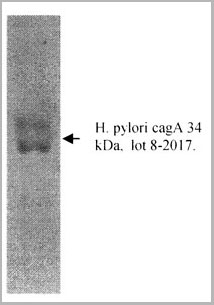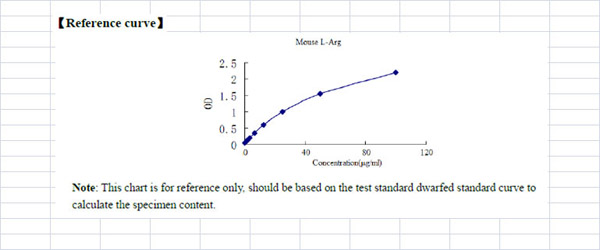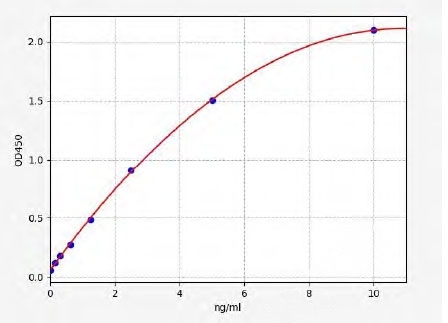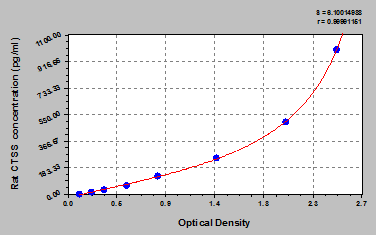Host
E Coli
Purity/Purification
>95% pure (10% SDS-PAGE, Coomassie blue stain)
Form/Format
Purified, Liquid; PBS with 50mM arginine
Concentration
1.17 mg/ml (lot 08/2017) (varies by lot)
Applicable Applications for CagA recombinant protein
Lateral Flow Assay (LFA), ELISA (EIA), Western Blot (WB)
Application Notes
Centrifuge before opening to ensure complete recovery of vial contents,
Preparation and Storage
Store in 4°C for short time only, aliquot to avoid repeated freezing and thawing , Store at -20°C.
Related Product Information for CagA recombinant protein
Helicobacter pylori is a Gram negative, micro-aerophilic spiral bacterium that colonizes in the human stomach and induces gastric mucosal inflammations that are linked to severe gastritis-associated diseases including atrophic gastritis, peptic ulcer and gastric cancer. H. pylori is detected in half of the world’s population. In 1994, the World Health Organization and International Agency for Research on Cancer categorized H. pylori infection as a group I carcinogens.
An important virulence factor of H. pylori is a secreted toxin known as Cytotoxin-associated gene A (CagA) which is located at the end of an approximately 40-kd nucleotides cluster of genes called cag pathogenicity island (PAI).
Cag PAI encodes a type-IV secretion system and transfers CagA protein into the intracellular region of gastric epithelial cell, inducing cellular hyper proliferation, apoptosis and leading to failure of gastric epithelial cell in maintaining its normal cytoskeletal structure, Also increases the secretion of cytokines such as tumor necrosis factor (TNF) and interleukin (IL) 1, 6 and 8 by the epithelial cells. The IL-8 leads to intense inflammatory responses and stimulates the production of oxygen free radicals that could cause DNA damage to adjacent cells. Accumulation of oxidative DNA damage could lead to genetic modifications of gastric epithelial cells which are carcinogenic.
Recombinant cagA protein is a 34kDa protein with isoelectric point at 8.63. This protein can be used for ELISA, Western blot and lateral flow immunoassay to detect specific antibody infected by H. pylori.
An important virulence factor of H. pylori is a secreted toxin known as Cytotoxin-associated gene A (CagA) which is located at the end of an approximately 40-kd nucleotides cluster of genes called cag pathogenicity island (PAI).
Cag PAI encodes a type-IV secretion system and transfers CagA protein into the intracellular region of gastric epithelial cell, inducing cellular hyper proliferation, apoptosis and leading to failure of gastric epithelial cell in maintaining its normal cytoskeletal structure, Also increases the secretion of cytokines such as tumor necrosis factor (TNF) and interleukin (IL) 1, 6 and 8 by the epithelial cells. The IL-8 leads to intense inflammatory responses and stimulates the production of oxygen free radicals that could cause DNA damage to adjacent cells. Accumulation of oxidative DNA damage could lead to genetic modifications of gastric epithelial cells which are carcinogenic.
Recombinant cagA protein is a 34kDa protein with isoelectric point at 8.63. This protein can be used for ELISA, Western blot and lateral flow immunoassay to detect specific antibody infected by H. pylori.
Product Categories/Family for CagA recombinant protein
Similar Products
Product Notes
The CagA (Catalog #AAA14645) is a Recombinant Protein produced from E Coli and is intended for research purposes only. The product is available for immediate purchase. AAA Biotech's CagA can be used in a range of immunoassay formats including, but not limited to, Lateral Flow Assay (LFA), ELISA (EIA), Western Blot (WB). Centrifuge before opening to ensure complete recovery of vial contents,. Researchers should empirically determine the suitability of the CagA for an application not listed in the data sheet. Researchers commonly develop new applications and it is an integral, important part of the investigative research process. It is sometimes possible for the material contained within the vial of "CagA, Recombinant Protein" to become dispersed throughout the inside of the vial, particularly around the seal of said vial, during shipment and storage. We always suggest centrifuging these vials to consolidate all of the liquid away from the lid and to the bottom of the vial prior to opening. Please be advised that certain products may require dry ice for shipping and that, if this is the case, an additional dry ice fee may also be required.Precautions
All products in the AAA Biotech catalog are strictly for research-use only, and are absolutely not suitable for use in any sort of medical, therapeutic, prophylactic, in-vivo, or diagnostic capacity. By purchasing a product from AAA Biotech, you are explicitly certifying that said products will be properly tested and used in line with industry standard. AAA Biotech and its authorized distribution partners reserve the right to refuse to fulfill any order if we have any indication that a purchaser may be intending to use a product outside of our accepted criteria.Disclaimer
Though we do strive to guarantee the information represented in this datasheet, AAA Biotech cannot be held responsible for any oversights or imprecisions. AAA Biotech reserves the right to adjust any aspect of this datasheet at any time and without notice. It is the responsibility of the customer to inform AAA Biotech of any product performance issues observed or experienced within 30 days of receipt of said product. To see additional details on this or any of our other policies, please see our Terms & Conditions page.Item has been added to Shopping Cart
If you are ready to order, navigate to Shopping Cart and get ready to checkout.





















